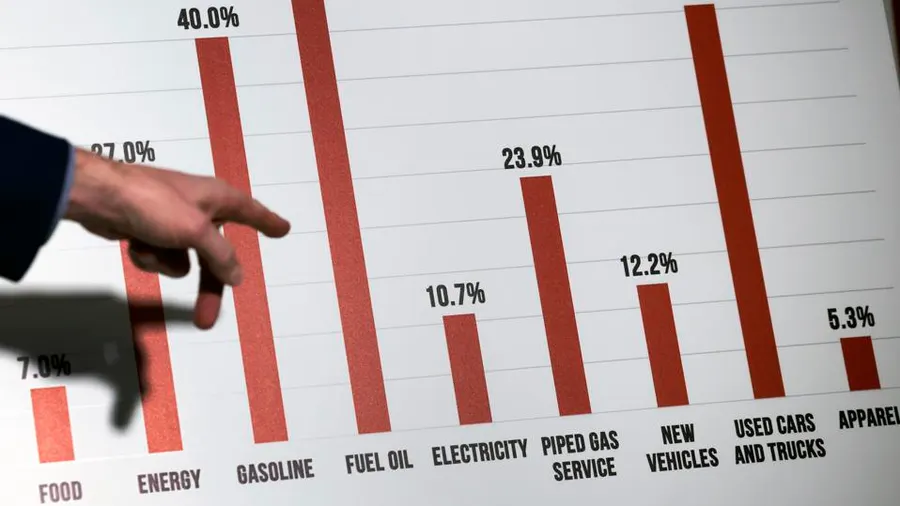The effects of negative interest rates on the US economy have become a topic of increasing interest for policymakers, investors, and the general public. Understanding how sub-zero rates can impact various aspects of the financial landscape is essential for navigating these unprecedented times.
In this article, we delve into the potential consequences of such unconventional monetary policies. We examine how negative interest rates influence savings, investments, and consumer behavior. By exploring the historical context and current debates, we aim to shed light on what the future might hold for the American economic environment.
The concept and rationale behind negative interest rates

Negative interest rates occur when central banks set their key interest rates below zero, meaning commercial banks are charged for holding excess reserves. The primary goal is to encourage spending and lending by making it costly for banks to hoard cash. Traditionally, central banks lower interest rates during economic downturns to stimulate growth. However, when rates approach zero, they must resort to unorthodox measures to spur activity.
The idea is to incentivize banks to lend more to businesses and consumers, leading to increased spending and investment. In turn, this should boost economic activity and help counter deflationary pressures. Although common in Europe and Japan, the US Federal Reserve has been more cautious about adopting this strategy.
Effect on savings and consumer spending
Negative interest rates can have a profound impact on consumer behavior. Traditional savings vehicles become less attractive as returns diminish or turn negative, discouraging individuals from storing their money in banks. Instead, consumers are more likely to spend or invest their funds in search of higher returns.
This boost in spending can stimulate economic activity, especially if consumers direct their money towards goods and services. Additionally, negative rates may encourage borrowing, as the cost of loans decreases, making large purchases such as homes and cars more affordable.
Impact on investments and financial markets
When interest rates fall below zero, the usual assumptions about risk and return get upended. Investors seeking better yields might shift their capital from traditional safe assets, like government bonds, to riskier investments, including equities and real estate. This influx of capital can inflate asset prices, sometimes leading to bubbles.
Moreover, negative rates lower the cost of borrowing for businesses, potentially stimulating capital investments. Companies might take advantage of the cheaper loans to fund expansion projects, research, and development, driving innovation and growth.
Nonetheless, the distortions in financial markets can create volatility and uncertainty. Price signals become less clear, making it difficult for investors to assess the true value of different assets. This can lead to misallocations of capital and increased market fragility.
Long-term implications for the US economy
While negative interest rates aim to provide short-term economic relief, their long-term effects on the US economy require careful consideration. Persistent negative rates can alter fundamental economic behaviors and institutions, with lasting repercussions.
One potential outcome is the erosion of bank profitability. By squeezing margins, negative rates make traditional banking less viable, prompting institutions to seek alternative revenue sources. In the long run, this could lead to changes in the banking sector’s structure and function.
Additionally, prolonged low rates might encourage excessive borrowing, both by individuals and corporations. While this can drive growth in the short term, it raises concerns about debt sustainability and financial stability down the line. A heavily indebted economy may struggle to withstand future shocks.
Impact on monetary policy and central banks
Negative interest rates also pose challenges for central banks and their policy frameworks. Traditional tools may become less effective, requiring central banks to devise innovative strategies to manage the economy.
The credibility of these institutions could be at stake if negative rates fail to deliver the desired outcomes. Furthermore, central banks may face political and public resistance. Negative rates can be unpopular, particularly among savers and financial institutions.
This opposition could limit the willingness of policymakers to pursue such measures or undermine the broader monetary policy framework. As a result, the role and strategies of central banks in ensuring economic stability are likely to evolve. The ongoing debate about the benefits and drawbacks of negative rates will shape the future of monetary policy in the US and beyond.
The role of fiscal policy
Given the limitations of monetary policy, there is a growing consensus that fiscal measures must complement central bank actions. Government spending and targeted fiscal interventions can play a crucial role in addressing economic slowdowns and boosting growth.
Fiscal stimulus can take various forms, such as infrastructure investments, tax cuts, or direct financial aid to individuals and businesses. These measures can provide immediate relief and support economic activity in ways that negative interest rates alone cannot achieve.
Ultimately, a balanced approach that combines both monetary and fiscal policies may offer the most effective strategy for ensuring long-term economic stability and growth in an era of negative interest rates. Policymakers must weigh the trade-offs and synergies of different tools to navigate this complex economic environment.
